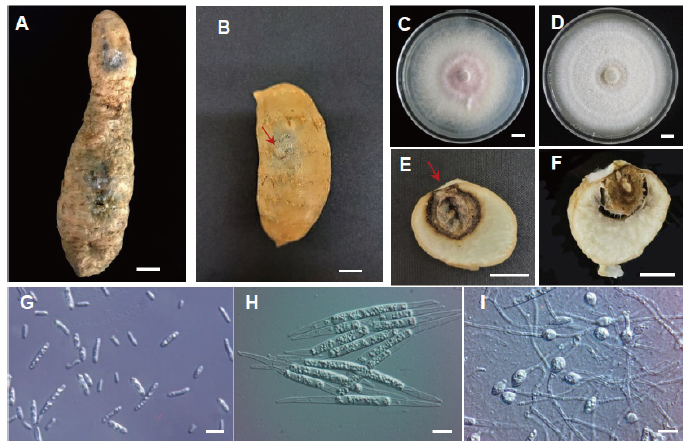Abstract
Figures & Tables

Fig. 1. Root rot caused by on tubers. (A) Symptoms of infected tubers collected from fields. (B) tubers inoculated with developed rot symptoms after 10 days. (C) A 10-day-old colony of growing on potato dextrose agar medium. (D) A 7-day-old colony of growing on potato dextrose agar medium. (E) Cross-section of the inoculated tuber in (B). (F) Cross-section of the inoculated tuber with . (G) microconidia and (H) Macroconidia. (I) Chlamydospores. Scale bar=1 cm (A-F) or 10 μm (G-I). Inoculation point was indicated with red arrow.


